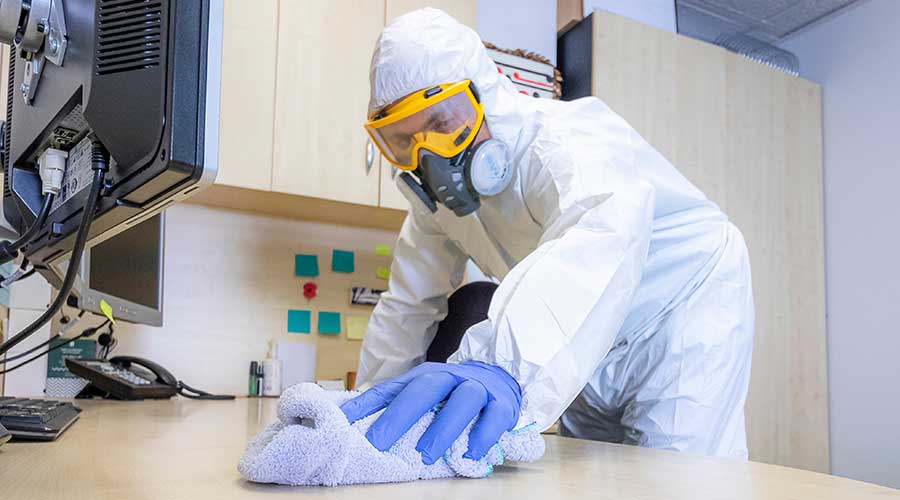Unless you’ve been on the moon for the past five years, you know the global toll on human life SARS-COVID has exacted. Perhaps you have been on the frontlines of the pandemic that killed approximately 7.1 million people and counting and know that bugs have no borders.
A viral bug — a pathogenic bacteria or virus — can be in one country today and halfway around the globe tomorrow. Have you seen the movie “Contagion”? The plot concerns the spread of a highly contagious virus transmitted by respiratory droplets and fomites, attempts by medical researchers and public health officials to identify and contain the disease, the loss of social order as the virus turns into a worldwide pandemic and the introduction of a vaccine to halt its spread.
“Half of healthcare facilities worldwide lack basic hygiene services with water and soap or alcohol-based hand rub where patients receive care and at toilets in these facilities,” according to the latest joint monitoring program report by the World Health Organization (WHO) and UNICEF. “Around 3.85 billion people use these facilities, putting them at greater risk of infection, including 688 million people who receive care at facilities with no hygiene services at all.”
In addition, a new global report on infection prevention and control (IPC) by the WHO that shows countries have made slow progress in addressing critical gaps to prevent healthcare-associated infections (HAIs).
Related: Infection Preventionist Staffing Levels Correlate to HAI Incidence
The report found that although 71 percent of countries have an active IPC program, just 6 percent met all the WHO IPC minimum requirements in 2023-2024. This amount is well behind the target of more than 90 percent by 2030 set in the WHO Global action plan and monitoring framework on IPC. The report also revealed that patients in low- and middle-income countries have up to 20 times higher risk of acquiring infections during healthcare delivery than in high-income countries.
HAIs are often difficult to treat, are the major driver of antimicrobial resistance and cause premature deaths and disability. The COVID-19 pandemic, as well as outbreaks of Ebola, Marburg and mpox, are the most dramatic demonstrations of the way pathogens can spread rapidly and be amplified in healthcare settings. But HAIs are a daily threat in every hospital and clinic, not only during epidemics and pandemics.
As is evident from these two reports, the likelihood that a tsunami of pathogenic threats to global healthcare facilities is not unthinkable. Simple cleaning of the environmental surfaces might be a key defense in the future wave of infectious diseases.
“The 21st century needs to broaden its scientific attitude to infection, and that is achieved by a deeper understanding of pathogen transmission,” Dr. Stephanie Dancer says. “If we cannot treat infection, we should at least try to prevent pathogens from reaching patients in the first place. Knowing where pathogens are and how they spread allows clinicians, academics and commercial entities to devise practices and technology aimed at protecting people both inside and outside the healthcare environment. Removing dirt from surfaces, whether visible or not, is fundamental to good health. It is time for cleaning, still the Cinderella of infection control, to step into the spotlight.”
J. Darrel Hicks, BA, MESRE, CHESP, Certificate of Mastery in Infection Prevention, is the past president of the Healthcare Surfaces Institute. Hicks is nationally recognized as a subject matter expert in infection prevention and control as it relates to cleaning. He is the owner and principal of Safe, Clean and Disinfected. His enterprise specializes in B2B consulting, webinar presentations, seminars and facility consulting services related to cleaning and disinfection. He can be reached at darrel@darrelhicks.com, or learn more at www.darrelhicks.com.

 Building Sustainable Healthcare for an Aging Population
Building Sustainable Healthcare for an Aging Population Froedtert ThedaCare Announces Opening of ThedaCare Medical Center-Oshkosh
Froedtert ThedaCare Announces Opening of ThedaCare Medical Center-Oshkosh Touchmark Acquires The Hacienda at Georgetown Senior Living Facility
Touchmark Acquires The Hacienda at Georgetown Senior Living Facility Contaminants Under Foot: A Closer Look at Patient Room Floors
Contaminants Under Foot: A Closer Look at Patient Room Floors Power Outages Largely Driven by Extreme Weather Events
Power Outages Largely Driven by Extreme Weather Events